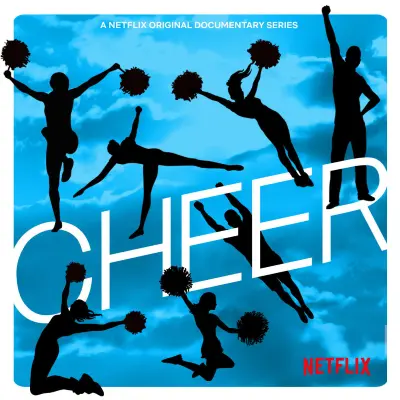What makes Netflix's Cheer so addictive?
-

"After watching Cheer’s first 55 seconds, I knew I was going to spend the next six hours of my life breathing, consuming, Googling, and social media-stalking everything about the show," says Alex Abad-Santos of the Netflix cheerleading reality show. "I knew then that it was my favorite new show of this very young year. Cheer focuses on a competitive sport that fuses turgid, erotic tribalism with the body-breaking violence of muscular humans flinging tinier, lighter humans into the air and then catching them — callused hands atop thickly taped wrists, clawing into triceps and ankles. To that mixture, the show adds the us-against-the-world mentality of Charles Xavier’s X-Men and the small-town glamour of Friday Night Lights. This is competitive junior college cheerleading at the dynastic Navarro College. This is Cheer. And this show is ballistically addictive."
ALSO:
- Watching Cheer makes you feel alive: "Cheer is an hour-long sensory overload," says Shannon Melero. "It is also incredibly beautiful. The bonds of friendship are nice but the definition these folks have in their bodies is worthy of a Michaelangelo painting. In one episode, Coach Monica is working out in the gym, and the definition in her arms and shoulders was such that I could have cried if not for the fact that I was watching this episode while running on the treadmill. At some point during the season, I started watching the show standing up instead of sitting. The closer the kids got to their national competition in Daytona, the deeper my brain went into competition mode. During one stunt rehearsal, a girl fell out of formation and I screamed, 'where the f*ck is her spotter?!,' as if anyone besides my neighbors would hear it. After that particular episode, I was so pumped I left work and worked out for four hours. Whenever fatigue hits me at the gym I imagine the Navarro coaching staff explaining to their team that the most important time to go full out is when they’re tired because that’s how endurance is built. My endurance is trash but Cheer seems to be the thing giving me enough life to work on it."
- Cheer is a searing look at never-ending trauma: "Cheer isn’t just about the sacrifices needed to win athletic competitions," says Meghan O'Keefe. "By profiling five specific Navarro team members — Gabi Butler, La’Darius Marshall, Jerry Harris, Morgan Simianer, and Lexi Brumback — Cheer examines the effects of physical and emotional trauma on young people. All five cheerleaders start off with a story that seems straight-forward enough and all claim that Navarro has given them a newfound purpose. However, as Cheer unfolds, we learn that each of the five are propelled by their different emotional demons — propelled to give themselves fully to Aldama’s coaching, even if said coaching results in an avalanche of potentially life-altering injuries for her students. Cheer leaves a bittersweet impression, portraying the physical pain these athletes experience as a fair tradeoff for the emotional security of a makeshift family that accepts them as they are."
- Cheer boasts underdog-makes-good tales, playing-through-pain subplots, and narrative threads about the weight of expectations
- Coach Monica Aldama is the Bill Belichick of cheerleading, if Bill Belichick had perfect square French Tips
- Executive producer Greg Whiteley came up with Cheer while filming Last Chance U: "We were struck by the intensity of the (cheerleading) practices," he says. "The coach was super aggressive and adopted a style of coaching that was very similar to what we were seeing Coach Buddy Stevens deploy while coaching football players. We saw them doing a level of stunts (in practice) that they didn’t do on the sidelines of the football game."
TOPICS: Cheer, Netflix, Greg Whiteley, Reality TV
More Cheer on Primetimer:- Cheer Star Jerry Harris Apologizes to Sex Abuse Victims After Being Sentenced to 12 Years in Prison
- Cheer Season 2 debuts at No. 2 on Nielsen's Streaming Top 10
- Cheer's Jerry Harris pleads guilty in federal child sex porn case
- Bring It On star Gabrielle Union pens an appreciation of Cheer breakout Jada Wooten
